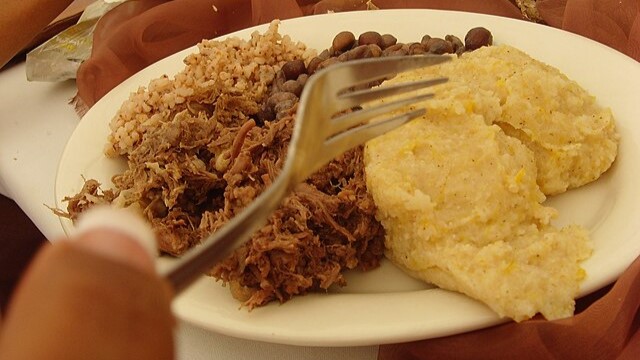GABORONE, Botswana — In the warm midday air, a heavy pot simmers quietly over a low flame. Inside, thick cuts of beef yield slowly to time and heat, fibers loosening as the scent of salt, black pepper, and a faint trace of garlic drifts outward. This is Seswaa — the slow-cooked meat dish that has, for generations, been the heart of Botswana’s communal table.
Seswaa is as unpretentious as it is revered. Traditionally prepared with beef or goat, its strength lies in patience rather than embellishment. The meat is seasoned sparingly, then cooked for hours until it can be pulled apart with ease. In many households, the process takes place in a cast-iron pot or an old Dutch oven, a vessel seasoned by years of family meals. What emerges is deeply flavorful, the richness of the meat concentrated and mellowed by the slow rhythm of cooking.
Though the essentials remain constant, subtle variations emerge from kitchen to kitchen. Some cooks add onions and tomatoes in the final stretch, introducing a gentle sweetness and acidity. Others incorporate vegetables alongside the meat, turning the dish into a more complete meal. The adaptability of Seswaa has allowed it to move comfortably between tradition and personal expression.
When the pot is finally taken from the heat, Seswaa is most often paired with pap — a maize meal porridge with a soft, creamy texture that soaks up the savory juices. In some homes, rice takes pap’s place, offering its own neutral counterpoint. Steamed greens, pumpkin, or other vegetables round out the plate, providing both contrast and balance.
Its significance extends beyond the kitchen. Seswaa is the taste of weddings, village celebrations, and Sunday gatherings. It is ladled into shared bowls, passed from hand to hand, eaten without hurry. The dish embodies the Botswana ethos of togetherness — a meal meant not only to nourish but to connect.
In rural areas, the making of Seswaa still follows rhythms set long before modern conveniences arrived. Meat is often sourced locally, and the slow cooking process becomes a social act in itself, with conversation and laughter surrounding the fire. In urban kitchens, the tradition persists, adapted to stovetops yet still rooted in the same unbroken line of heritage.
As Botswana’s cities grow and its culinary influences diversify, Seswaa remains firmly in place. It is both a living tradition and a reminder of enduring values: patience, generosity, and the quiet comfort of a shared meal. In its simplicity lies its staying power — a dish as unchanging as the bonds it helps to sustain.
Sources
- Food and Agriculture Organization of the United Nations. Botswana Food and Nutrition Profile, 2020.
- Motshwane, T. “Culinary Heritage in Botswana.” Botswana Guardian, 2021.
- Khupe, M. “Seswaa and the Social Fabric of Botswana.” Journal of African Culinary Studies, 2019.

